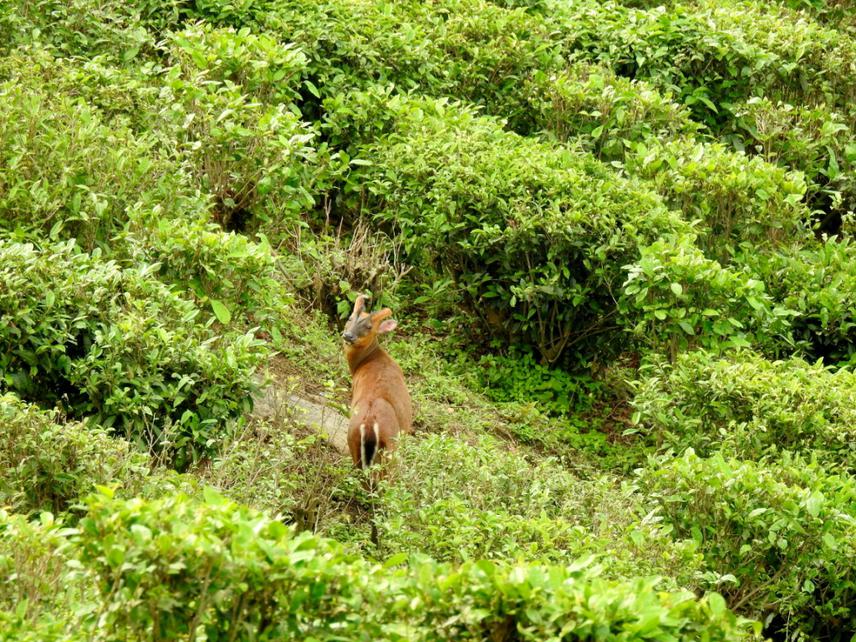Annesha Chowdhury
The aim of my study is to assess the importance of the Darjeeling tea-forest landscape in its ability to support refugium functions and movement of various taxa of biodiversity and to sustain the conditions for the future supply of key ecosystem goods and services.

A barking deer (Muntiacus muntjak) inside a tea estate.
The decline in the world’s forests has resulted in biodiversity loss, thus emphasizing the need to adopt conservation approaches that focus on human-dominated landscapes and outside protected areas. Very often these landscapes are dominated by agriculture and managed by communities who depend on their surrounding ecosystem for benefits such as fuel wood, timber, pollination, manure etc. Recently communities have started drawing from the aesthetic services of the landscape through home stays and wildlife appreciation. With the increasing rate at which forests and agricultural land are being diverted to more intensive land-uses, a growing concern is the impact on the persistence of biodiversity and on the future supply of ecosystem services, both of which contribute in some way to human wellbeing. The tea-forest landscape of the Darjeeling Himalayas are known to exist as extensions of the forest frontier, by facilitating movement between private forest patches and also protected areas such as the Singhalila National Park, Senchel and Mahananda Wildlife Sanctuaries or serving as refugia for wildlife.
The adoption of sustainable agricultural standards or certifications has become a novel way of reducing the negative impact industrial agriculture on biodiversity and human wellbeing. Tapping into such market-based innovations, such as certifications, have added value to products such as tea, enabling them to penetrate niche markets, while minimizing risks and increasing branding visibility for tea growers. Being the first official Geographical Indication of India along with the state support of tea-tourism and small growers and an ever growing tea drinking consumer base, has increased the revenue generation ability of this landscape. In the current climate of economic growth and the need to conserve for the future, my study aims to assess whether such certified forest-tea landscapes actually contribute to biodiversity conservation by supporting movement and habitat functions as well as the future supply of ecosystem goods and services for human wellbeing in the Himalayan biodiversity hotspot.